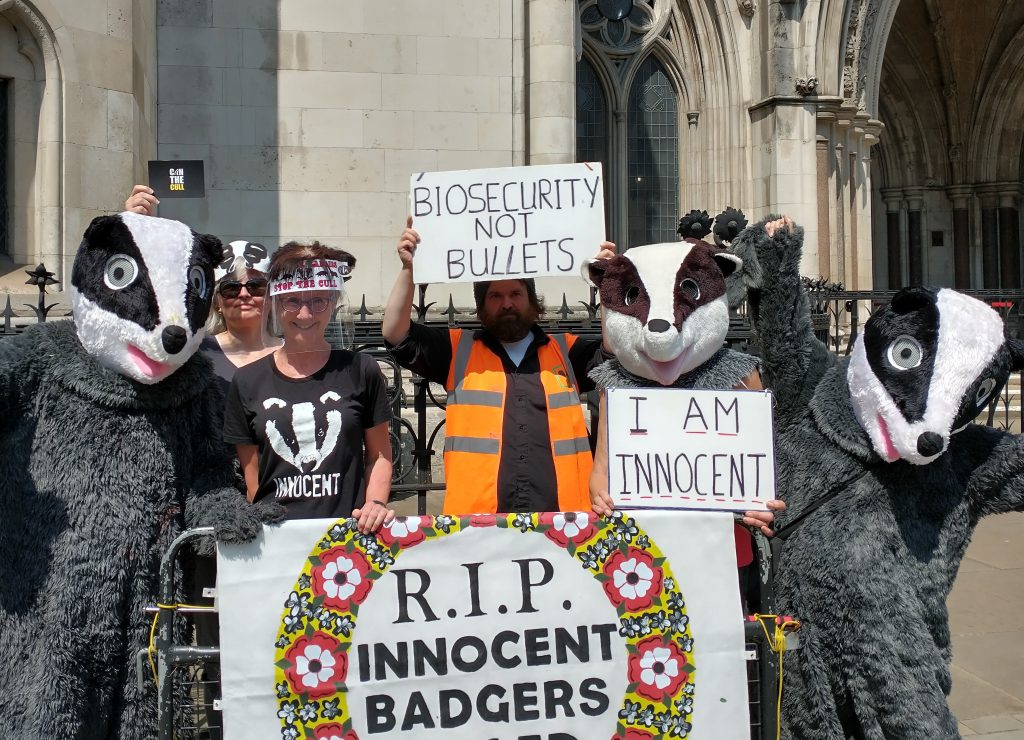Mr Justice Scoffield has quashed the NI government attempt to introduce controversial badger culling to Northern Ireland. Granting a judicial review brought by wildlife NGO’s funded by public donation, he said that consultees were not told enough – and in sufficiently clear terms – to enable them to make an intelligent response in the consultation exercise. The ruling concludes:

“The court was unimpressed by the respondent’s argument that disclosure of the business case would be too complicated or distracting for would-be consultees,”
“The fact that consultees did their best to respond on the basis of the more limited set of information which had been disclosed to them does not alter the respondent’s obligation to act fairly.”
In September 2022 year Legal Campaigners Wild Justice with Northern Ireland Badger Group (NIBG) were granted a High Court hearing at the Royal Courts of Justice in Belfast to challenge a cull of badgers in Northern Ireland HERE and HERE.
This legal claim contested a decision announced in March 2022 by the Minister for Agriculture, Environment and Rural Affairs (DAERA), Edwin Poots, to allow killing of up to 4,000 badgers a year along the lines that DEFRA has been mass killing healthy badgers in England since 2013. The primary target was a decision of 24 March 2022 – set out in a statement made by the Minister that day and in a ‘Bovine Tuberculosis Strategy for Northern Ireland’ published by the Department shortly afterwards.
The claim brought was that consultation on the policy was incorrect and did not reach the requirements of lawful consultation. So, the decision to choose to control the badger population by allowing farmer-led groups to shoot free-roaming badgers was unlawful. The judge agreed.
The claim argued that Mr Poots’ decision is unlawful because he issued the Article 13 (power to destroy wildlife) order under the Diseases of Animals 1981 Order, but that he had not made sure that there was no reasonably practicable alternative way of dealing with bovine TB in Northern Ireland.
Finally, the consultation had proposed shooting badgers as a preferred option, based on a “business case” which was not disclosed as part of the consultation documents. Because of this the consultation was not a fair procedure as those consulted were prevented from having a properly informed response without seeing it. Comparisons with Test Vaccinate Remove (TVR) approaches had not been fairly made and an APHA position that firmly place TVR approaches “on a par with proactive culling with respect to impact on cattle herd breakdowns” was not properly addressed.
As previously reported, with the help of the Northern Ireland farming industry press, the farming sector was being hoodwinked into thinking that badger culling could somehow help them. DAERA had been busy promoting badger culling with ‘roadshows’ making exaggerated claims, disseminating misinformation and use other propaganda tricks to try to garner cooperation.
All the lessons from England including the question marks over government badger culling science, going back to the 1990s are relevant too. It was barely possible to believe, after year-on-year failure in England and the Republic of Ireland, that DAERA wished to ignore their inadequate cattle controls and cull badgers over the next 10 years across Northern Ireland.
Also proposed was an element of experimental badger vaccination after the mass slaughter, a policy that government appointed experts in England in 2018 said was an unproven approach to the control of bTB in cattle.
DAERA may decide to appeal the decision or more likely to reconsult with a business plan that they have held secret, and will no doubt need to rewrite. Will they now go down the TVR route or cull and TVR – this too would be a huge mistake? With the present absence of an Executive and sitting Assembly at Stormont, it is unlikely that authorisation could be given in any case, even with a new consulted plan. What DAERA should do is think again. Even more new science has emerged since the claim began, showing why badger culling policy science has gone so badly wrong and culling badgers in any way is unnecessary.
Huge congratulations to Northern Ireland Badger Group and Wild Justice for bringing the case and to all those supporting the case and opposing the flawed consultation process.










